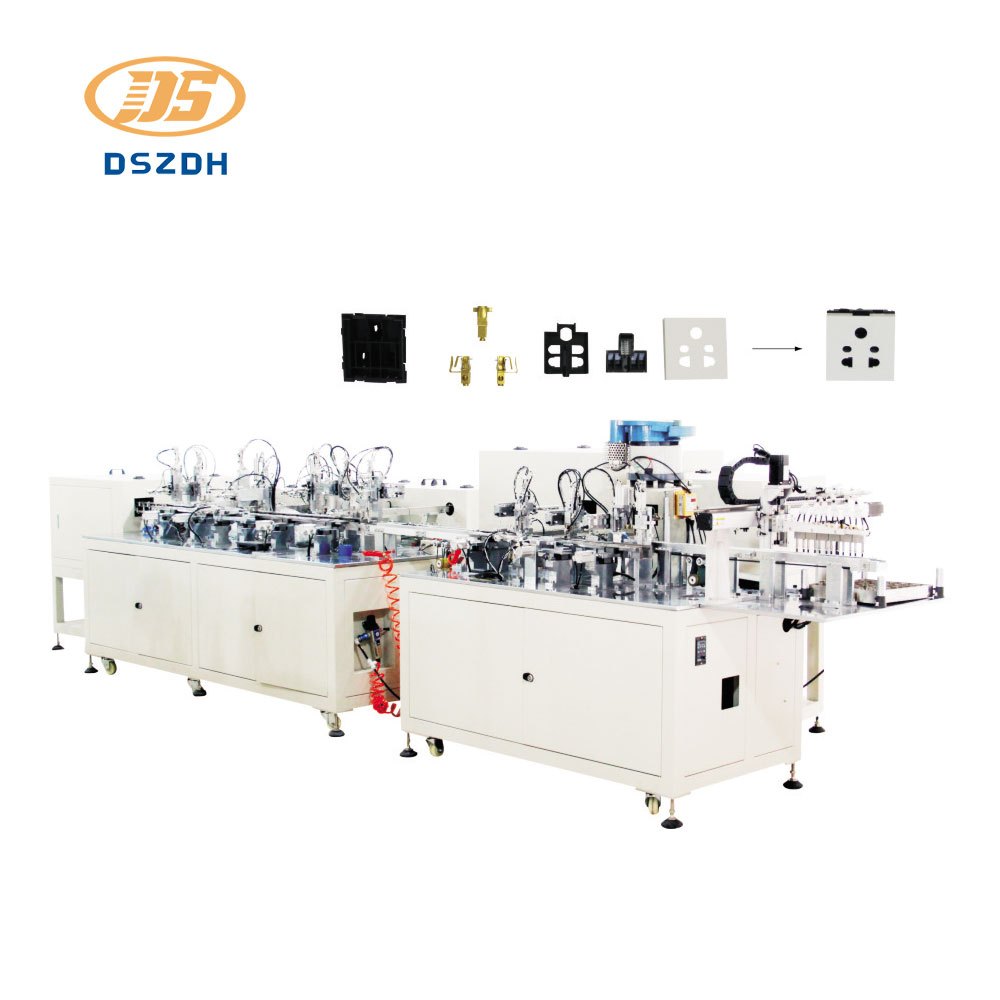Understanding the Primary Function of a Three Hole Socket Automatic Assembly Machine
2024-04-03
In today's rapidly evolving manufacturing landscape, automation has become a cornerstone for efficiency, precision, and productivity. One significant example of this automation is the Three Hole Socket Automatic Assembly Machine. This advanced piece of equipment plays a pivotal role in the assembly of three-hole sockets, offering numerous benefits over traditional manual methods. Let's delve into the primary function of this innovative machine and explore how it revolutionizes the manufacturing process.
At its core, the primary function of a Three Hole Socket Automatic Assembly Machine is to automate the assembly of three-hole sockets, streamlining production and enhancing overall efficiency. These machines are meticulously designed to handle the intricate tasks involved in assembling three-hole sockets with precision and reliability.
So, what exactly does this entail?
1. Component Handling: Three-hole sockets consist of various components such as metal contacts, plastic casings, screws, and other small parts. The automatic assembly machine is equipped with mechanisms to handle these components efficiently, ensuring proper alignment and positioning during the assembly process.
2. Assembly Sequence: The machine follows a predefined assembly sequence, which is programmed based on the specific design requirements of the three-hole sockets. This sequence dictates the order in which components are assembled, ensuring consistency and accuracy in the final product.
3. Precision Assembly: One of the key advantages of using an automatic assembly machine is its ability to achieve precise and uniform assembly. Advanced robotics and servo systems are employed to manipulate components with utmost accuracy, minimizing the risk of errors or defects.
4. Fast Production Rates: By automating the assembly process, Three Hole Socket Automatic Assembly Machines significantly increase production rates compared to manual methods. These machines can operate continuously for extended periods, delivering a high volume of finished products in a shorter timeframe.
5. Quality Control: Quality control is an integral part of the assembly process. Automatic assembly machines are equipped with sensors, detectors, and monitoring systems to detect any defects or inconsistencies during assembly. This ensures that only high-quality three-hole sockets are produced, reducing the likelihood of faulty products reaching the market.
6. Flexibility and Customization: Despite their automated nature, Three Hole Socket Automatic Assembly Machines offer flexibility and customization options. Manufacturers can easily reconfigure the machine to accommodate different socket designs or specifications, allowing for versatility in production.
7. Safety Features: Safety is paramount in manufacturing environments. Automatic assembly machines are designed with built-in safety features to protect operators and prevent accidents. These features may include emergency stop buttons, protective enclosures, and sensors to detect any abnormalities in operation.
In summary, the primary function of a Three Hole Socket Automatic Assembly Machine is to automate the assembly process of three-hole sockets, thereby improving efficiency, precision, and productivity in manufacturing operations. By harnessing the power of automation, manufacturers can streamline production, reduce costs, and deliver high-quality products to meet the demands of today's market. As technology continues to advance, we can expect to see further innovations in automatic assembly machines, driving continued improvements in manufacturing processes across industries.



